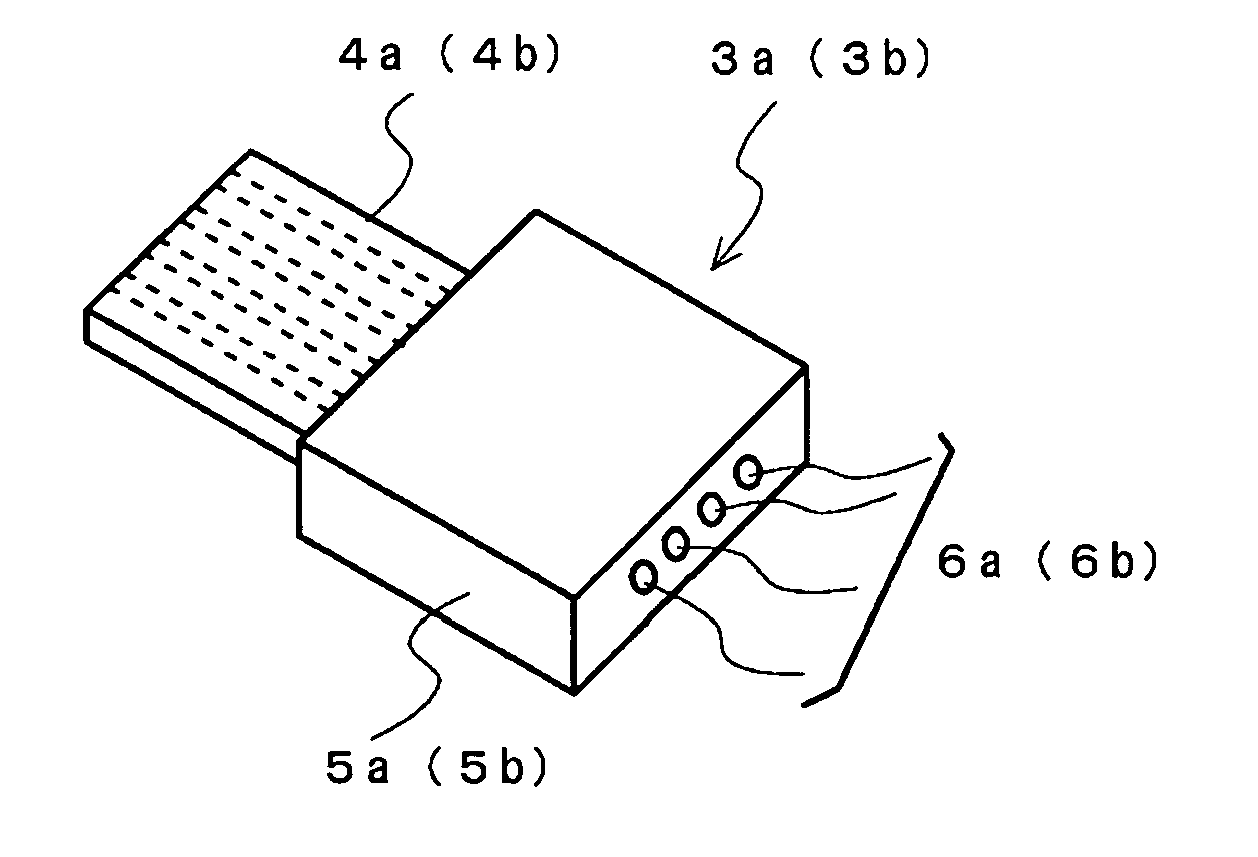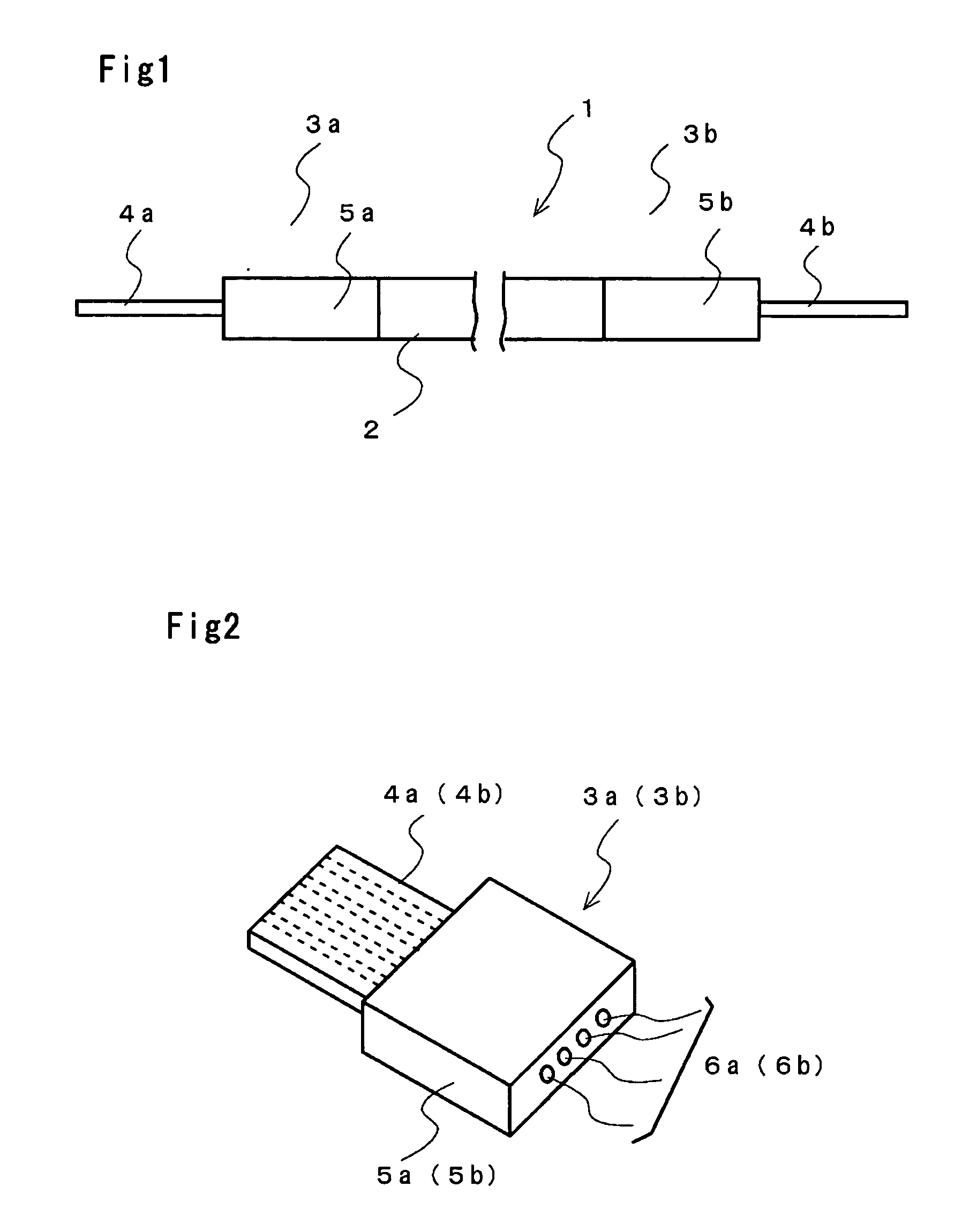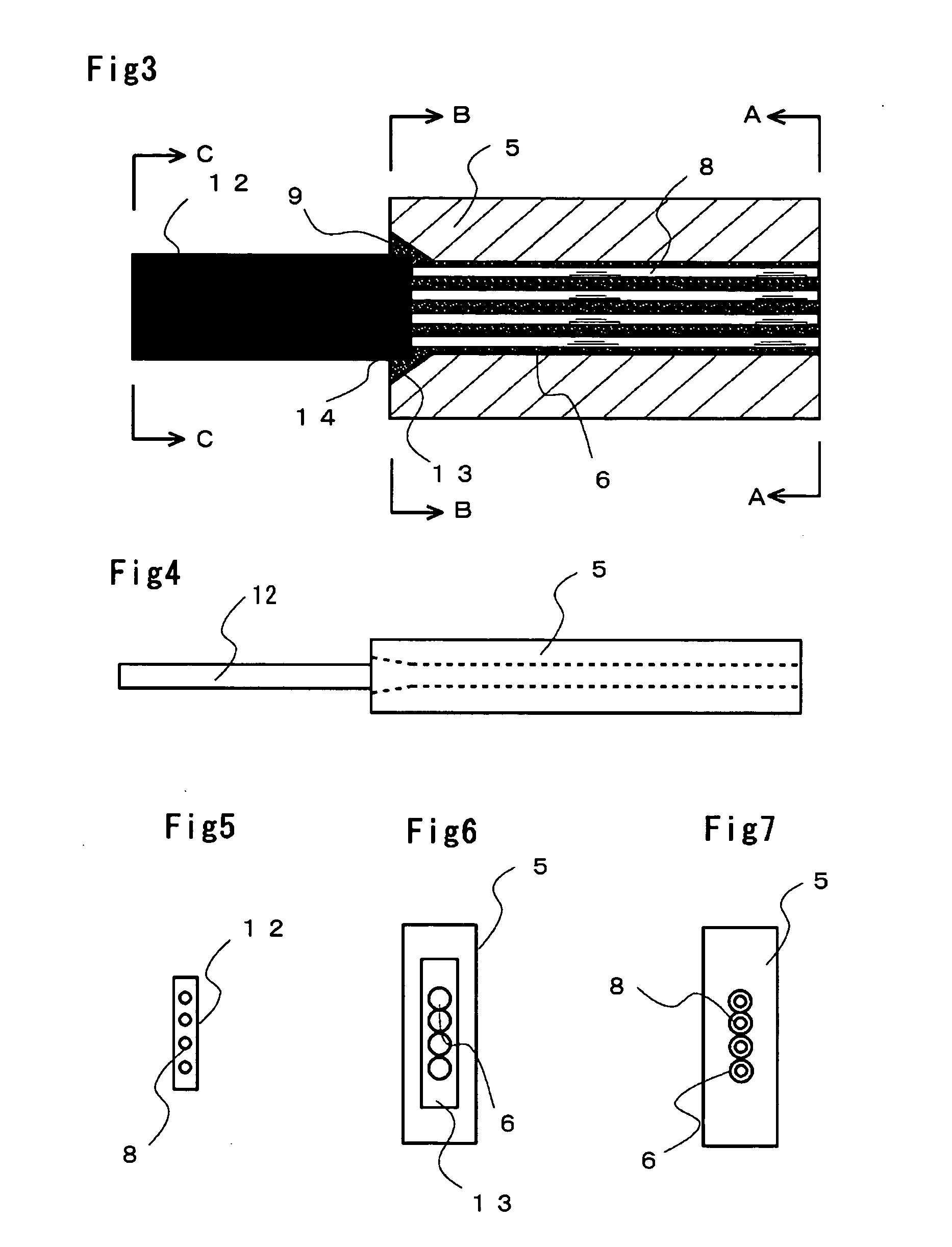Highly reliable optical waveguide device
- Summary
- Abstract
- Description
- Claims
- Application Information
AI Technical Summary
Benefits of technology
Problems solved by technology
Method used
Image
Examples
Embodiment Construction
[0042] Best modes of carrying out the present invention will be described in further detail using various embodiments with references to the accompanying drawings.
[0043] Next, details explain the embodiments regarding implementation aspects.
[0044]FIG. 1 is a plan view of an optical waveguide device according to the present invention.
[0045] In FIG. 1, an optical waveguide device 1 according to the present invention comprises a waveguide chip and an optical fiber array connected to each other. According to the embodiment, an optical fiber array 3a and an optical fiber array 3b are connected to both ends of a waveguide chip 2. The optical fiber array 3a comprises an optical fiber 4a and an optical fiber holding member 5a. The optical fiber array 3b comprises an optical fiber 4b and an optical fiber holding member 5b. The waveguide chip 2 comprises a waveguide splitter, an optical switch, or a variable optical attenuator, for example. Any of the waveguide chips is selected for use in...
PUM
 Login to View More
Login to View More Abstract
Description
Claims
Application Information
 Login to View More
Login to View More - R&D
- Intellectual Property
- Life Sciences
- Materials
- Tech Scout
- Unparalleled Data Quality
- Higher Quality Content
- 60% Fewer Hallucinations
Browse by: Latest US Patents, China's latest patents, Technical Efficacy Thesaurus, Application Domain, Technology Topic, Popular Technical Reports.
© 2025 PatSnap. All rights reserved.Legal|Privacy policy|Modern Slavery Act Transparency Statement|Sitemap|About US| Contact US: help@patsnap.com



